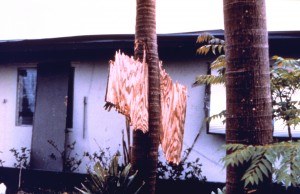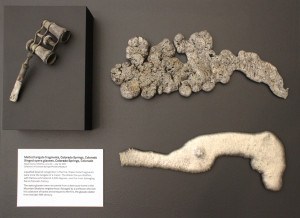

A new exhibit in at the National Building Museum in Washington D.C. highlights disaster mitigation and tries to answer the questions of where and how to build new structures.
A hurricane simulator, a deconstructed FEMA safe room and even stairs that move in the event of an earthquake are some highlights of the exhibit.
The exhibit, “Designing for Disaster” opened on May 11 and runs through August 2, 2015.

The new exhibit highlights Florida International University’s 12-fan Wall of Wind which is capable of simulating a Category 5 hurricane with wind speeds of up to 157 mph. In addition, actual artifacts from the Waldo Canyon wildfire and Hurricane Katrina are on display.

According to the museum announcement the exhibit “examines how we assess risks from natural hazards and how we can create policies, plans and designs yielding safer, more disaster-resilient communities.”
The exhibit’s curating team defined disaster mitigation as “anything you can do long-term to prevent or minimize the impact of a natural disaster.” The intent of the exhibit, the team said, is to highlight the importance of designing resilient structures before a disaster happens.
A multimedia exhibit offers examples of past natural disasters, including wildfires, earthquakes, tornadoes and hurricanes. Existing disaster-resistant buildings across the county are highlighted revealing innovative construction techniques.
Building a Disaster Resistant Future
In association with the exhibit, the National Building Museum’s website contains educational videos on disaster-related facts. For example, one highlights the question of which building form is the safest in the event of an earthquake. The answer: a square and short building will best withstand an earthquake.

The exhibit highlights mitigation milestones in the U.S. The first disaster relief legislation in U.S. history was passed as a result of the damage caused by the New Madrid Earthquakes that occurred between December 1811 and February 1812. The Saffir-Simpson Hurricane Scale was implemented after Hurricane Camille in 1969.
The museum plans to host associated events throughout the year. The first event, a talk by two representatives of the winning design teams involved in the Rebuild by Design competition, will be held June 24, 2014.
For more information, visit www.nbm.org.